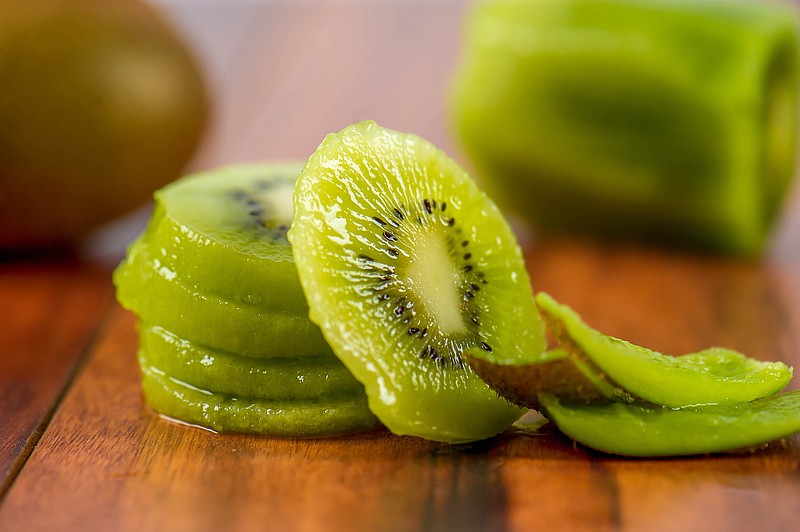- Nutrition: One (3-inch long) kiwifruit contains 42 calories; 1 cup chopped kiwifruit has 102 calories. One kiwifruit supplies a full adult daily allowance of vitamin C; that's more per ounce than oranges. Kiwifruit also is high in vitamin K, copper and fiber.
- Selection: California-grown kiwifruit is available from October through May. Look for firm, unblemished fruit; big or small taste about the same. Kiwi are picked green and ripen off the vine. Gently press the outside of the fruit with your thumb; a ripe kiwi will give to slight pressure. A firm one needs more time.
- Storage: Kiwifruit will keep several days on the kitchen counter and four weeks (or more) unwrapped in the refrigerator crisper drawer.
- To ripen: Put firm kiwis in a brown paper bag with an apple or banana, which releases ethylene gas. That speeds ripening. Check daily.
- Preparation: Kiwi's fuzzy brown skin is edible (and full of fiber), but the peel is usually discarded. To remove the flesh, slice kiwi lengthwise and scoop out the sweet, juicy meat with a spoon. The tiny black seeds are edible.
- Don't mix with milk or Jello: Raw kiwis contain an enzyme-actinidain-that breaks down milk proteins. That's problematic when combining kiwifruit with dairy products. For example in a pavlova (a cream-filled meringue topped with kiwi), place kiwi slices on top of whipped cream just before serving, instead of folding the fruit into the cream.
That same enzyme prevents gelatin from jelling, so don't add fresh kiwi to Jello; it will never set. The same goes for gelatin-based desserts.
- Meat magic: Because it does break down proteins, actinidain is used as a meat tenderizer. Add some pureed kiwi to your meat marinade.
- Allergy warning: Such a powerful enzyme also produces allergies in some people. Kiwi allergy typically produces an unpleasant itchiness and sore mouth.
- Origin: Kiwifruit is native to China, which considers this berry its national fruit. Europeans originally called it "Chinese gooseberry."
Farmers started growing this fruit commercially about a century ago in New Zealand. That's where American servicemen first tasted "kiwifruit," and they helped popularize it in the United States after World War II. First importing it in 1962, California produce pioneer Frieda Caplan gets credit for introducing millions of Americans to "kiwifruit" under that name.
Imported kiwis-primarily from New Zealand, Italy and Chile-make this popular winter fruit available year-round.

